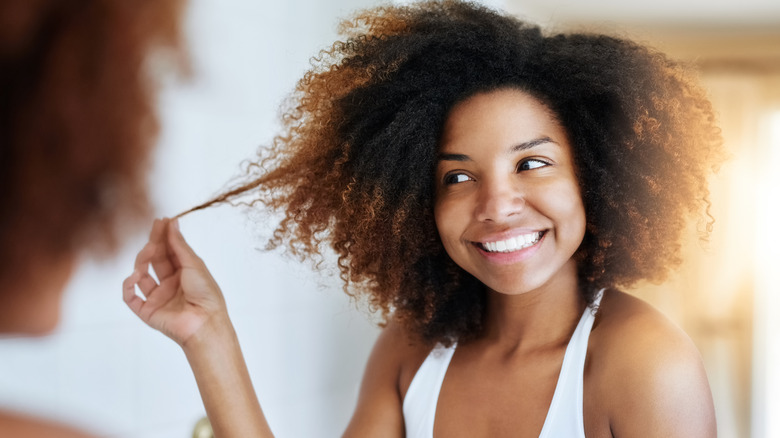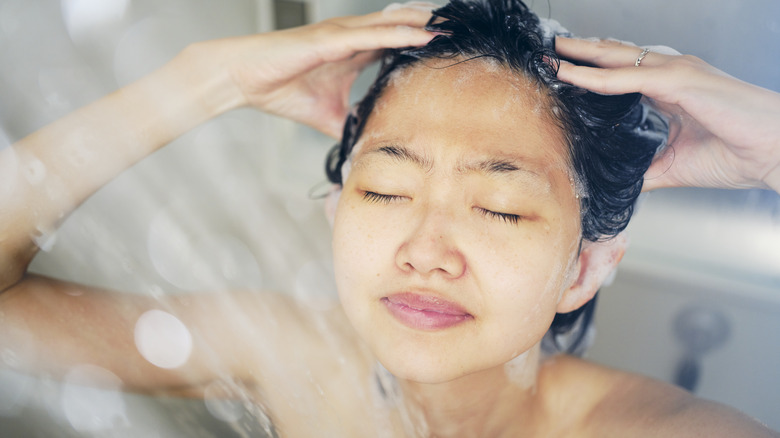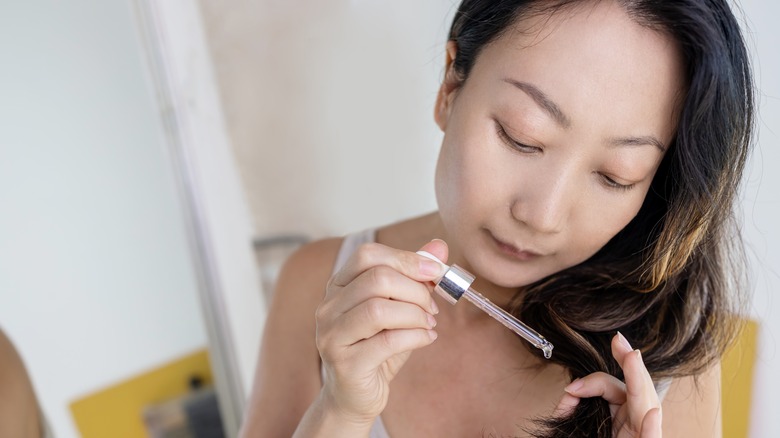FYI, Hydration And Moisture Are Two Totally Different Things - How To Know What Your Hair Needs
If you are into hair care, you have probably heard of moisture and hydration for maintaining your hair health. But did you know that these are two different things? It's easy to revert to using them interchangeably when looking at products and routines. But if you don't use both correctly, you'll have difficulty achieving the hair health you want.
So what is the difference between hair hydration and moisturization? Hair hydration refers to how your hair retains water in its inner sections, according to Sitting Pretty. Without this water retention, your hair can dry out and become damaged more easily. Hair moisturization, on the other hand, helps lock in hydration to protect and keep your locks soft, shiny, and bouncy. According to NaturAll, hydration and moisturization work together to protect your hair.
Understanding hydration versus moisturization is especially important if you have coarse, frizzy, or damaged hair, so you know which products to use. By mastering your hair routine, you can be on the way to having your dream hair.
How to hydrate hair
Hairstory reports that hair contains three layers, the cuticle, the cortex, and the medulla. Hydration focuses on reaching the two innermost layers, the cortex and the medulla. To know whether or not your hair is dehydrated, try putting a strand in some water. If the strand quickly becomes waterlogged and sinks, that's a sign that your hair is in need of hydration. Healthline explains that a key ingredient in products to help hydrate hair is humectants. Humectants attract water and work by pulling water from the air into your strands to keep them moist. Common humectants in hair products are glycerin, honey, and aloe vera. Using products with these ingredients will help your hair create the moisture it needs to stay hydrated.
Avoiding heated styling tools helps retain hydration, as heat dries out hair. If you must use heat, apply a heat protectant in order to avoid dry, damaged strands. The sun can also majorly damage hair by drying it out, so make sure to apply protection when in direct sunlight for long periods of time.
One of the easiest ways to hydrate hair is by drinking enough water. We all know we need to drink at least eight glasses of water a day in order to hydrate all aspects of our bodies, including hair. If the body overheats it can create dryer hair, reports SkinKraft.
How to moisturize hair
Moisturizing follows hydrating and acts as the sealant for water retention in hair. It works by targeting the outermost layer of hair, the cuticle, per Sitting Pretty. By coating and protecting hair, moisturizers allow hydrants to do their jobs and keep their hair full of life and shine. Popular moisturizing ingredients in hair products are oils and emollients. If your hair is coarse or curly, or has been heavily processed, tangles easily, or has a lot of split ends, you may need to focus on moisturizing, per Hairstory.
Oils such as jojoba and avocado oil work great for sealants without weighing your hair down or making it look greasy, according to Fine Natural Hair and Faith. A 2017 study from Natural Products Chemistry and Research shows jojoba oil closely resembles natural oil sebum in hair. In fact, jojoba oil can balance sebum production to help ensure your stands don't look oily while moisturizing, per SkinKraft. Additionally, avocado oil has monounsaturated fats, which excel at allowing the oil to reach the inner layers of hair and seal hydration in.
A concern of moisturizers is that they will weigh down your hair and create a greasy look. This lifeless-looking hair can happen from over-moisturization which disrupts your hair's protein-moisture balance. To ensure this is not an issue, thoroughly rinse products after application. And on your wash days, try to incorporate a clarifying, sulfate-free shampoo.


